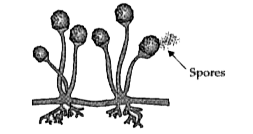Chlorenchyma is known to develop in the
Cytoplasm of Chlorella
Mycelium of a green mould such as Aspergillus
Capsule of a moss
Pollen tube of Pinus
The correct Answer is:C
Step by step video, text & image solution for Chlorenchyma is known to develop in the by Biology experts to help you in doubts & scoring excellent marks in Class 12 exams.
Updated on:21/07/2023Topper's Solved these Questions
- ANATOMY OF FLOWERING PLANTS BOOK - AAKASH INSTITUTECHAPTER - ANATOMY OF FLOWERING PLANTS EXERCISE - Section D Assertion-Reason Type Questions
10 Videos
- ANATOMY OF FLOWERING PLANTS BOOK - AAKASH INSTITUTECHAPTER - ANATOMY OF FLOWERING PLANTS EXERCISE - ASSIGNMENT SECTION B Objective Type Questions
35 Videos
- ANIMAL KINGDOM (CHORDATES) BOOK - AAKASH INSTITUTECHAPTER - ANIMAL KINGDOM (CHORDATES) EXERCISE - Assignment (Section-D)
10 Videos
Similar Questions
Knowledge Check
Chlorenchyma Endodermis of dicot stem is also called
ABundle sheathBStarch sheathCMesophyllDPithChipko movement is the world's most known eco development programme, started by S.L. Bahuguna is 1973 in Tehri Garhwal (Uttaranchal). It is related with
Aplant/forests conservationBafforestationCconservation of water resourcesDpopulation controlIn the Northern Hemisphere, depressions more readily develop in the Atlantic and Pacific Oceans. These zones are known as
AThe IcelandicBAleutianCThe Icelandic and AleutianDNone of these
Study the given diagram

'Blobs' that develop at the tips of the non-reproductive thread is known as:
View SolutionThe “Siddhimatrika” script was one of the forms of writing Sanskrit in ancient India. This script, which made Sanskrit works known in China and Japan was developed during the times of ___:
View SolutionChlorenchyma cells are chlorophyll containing
View SolutionIn Eichhornia ,parenchyma developes air spaces such parenchyma with air cavities is known as
View SolutionAlthough in most of spades fruits are result of fertilisation, there are a few species in which fruit develop without fertilisation - process is known as:
View Solution
